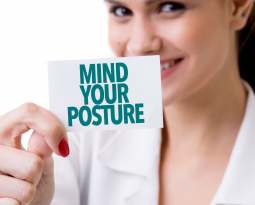
Saccadic Eye Movements and Postural Stability
There is central integration of the visual and postural system to maintain the body upright against gravity. This is a vital connection to our lives and functions of human beings, meaning that we are able to change our visual gaze and look at different objects around us in our environment without losing balance every time we shift our focal point.
What are Saccades?
Saccades are smooth pursuit movements that abruptly change the patient’s point of fixation. They range in amplitude from the small quick movements made while reading, to much larger movements made while scanning around a room.
How Can Saccadic Eye Movements Improve Postural Stability?
Vision contributes to upright postural control by providing afferent feedback to the cerebellum. Research shows that performing saccadic eye movements reduces the amplitude of body displacements (Rougier & Garin, 2007).
With body oscillations, or postural sway, the image of the environment moves on the retina; this retinal slip which is directly related to these oscillations, is used by the central nervous system as feedback for compensatory sway.
The influence of horizontal saccadic eye movements of high frequencies, particularly with a stance of the patient’s feet being hip width apart, actually reduces oscillations associated with postural sway.
Integrating posture and visual information via eye movements provides crucial support for human activity within our environment. The detection of changes resulting from body movements is necessary for controlling body equilibrium.
What Does the Mean for Your Patients?
What does this mean for your patients? Horizontal visual saccades is a simple postural drill that you can test, re-test, and perform with your patients if body sway is improved.
When implementing horizontal saccades with your patients, always check postural sway before doing the eye movements, and after performing the eye exercises. If it improves, we know that this is an exercise that is valuable to the nervous system of the patient and they should be doing this drill in addition to their postural correction care plan.
There is a strong connection between central integration and postural control. Be sure to monitor your patients and watch for any signs of fatigue or systemic overload. Do the horizontal saccadic exercises to the point of fatigue.
Be persistent with this drill, in addition to your normal postural rehabilitation plan, and watch your patients’ posture improve!













